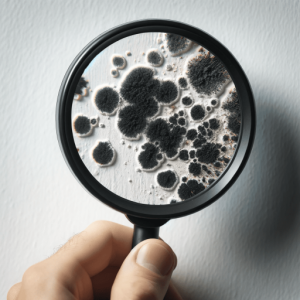Air purifiers are often touted as essential tools for maintaining a healthy indoor environment. While they can effectively remove harmful airborne particles like dust, allergens, and even some microorganisms, under certain circumstances, they can inadvertently contribute to the growth of mould and bacteria.
Understanding the Potential Risk:
Air purifiers work by drawing in air through a filter system that traps contaminants. However, the filters themselves can become breeding grounds for mould and bacteria if not properly maintained. Here’s how:
- Moisture Trapping: If the air purifier operates in a humid environment or the collected moisture isn’t regularly emptied from the collection tray (if applicable), the trapped moisture can create a perfect breeding ground for mould and bacteria growth within the filter.
- Dirty Filters: Over time, the filter itself can become clogged with dust and other debris, providing additional nutrients for microbial growth. Additionally, neglecting to replace filters at recommended intervals can significantly increase this risk.
- Improper Cleaning: Not cleaning the air purifier regularly, especially the washable parts, can allow accumulated moisture and debris to harbour mould and bacteria.
Mitigating the Risks:
To prevent your air purifier from contributing to mould and bacteria growth, follow these essential practices:
- Maintain a Low Humidity Level: Ideally, aim for a relative humidity level between 30% and 50% in your home. This can be achieved through ventilation, dehumidifiers, or adjusting your air conditioning settings.
- Empty Collection Trays Regularly: Depending on the model, some air purifiers have collection trays that accumulate moisture. Empty these trays frequently to prevent stagnant water from creating a breeding ground for microbes.
- Clean and Replace Filters: Clean reusable filters regularly according to the manufacturer’s instructions. Additionally, replace disposable filters as per the recommended schedule, typically every 1-3 months depending on usage and air quality.
- Clean the Unit Regularly: Wipe down the air purifier’s exterior surfaces regularly with a damp cloth to prevent dust and debris accumulation. Additionally, follow the manufacturer’s instructions for cleaning any specific internal components.
Choosing the Right Air Purifier:
When selecting an air purifier, consider the following:
- HEPA Filters: Look for air purifiers equipped with HEPA (High-Efficiency Particulate Air) filters as they effectively capture mould spores and bacteria.
- Automatic Features: Some models offer automatic features like humidity sensors or filter replacement reminders, making maintenance easier.
- Maintenance Requirements: Choose an air purifier with a maintenance schedule that aligns with your comfort level.
By understanding the potential risks and practising proper maintenance, you can ensure your air purifier effectively removes harmful particles without contributing to mould and bacteria growth in your home.


